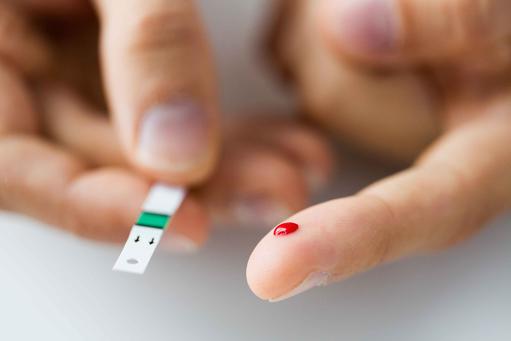- A recent study suggests that a drug combined with dietary and lifestyle changes can prevent those with pre-diabetes from progressing to full blown type-2 diabetes (T2DM)
- T2DM kills millions and cost billions
- 35% of adults in the UK, and 50% in the US now have prediabetes
- The UK has launched the world’s first nationwide diabetes prevention program called Healthier You based on personal education and training
- Prevalence rates of T2DM are still rising
- Research on the gut-brain axis suggests that drugs have a role to play in preventing T2DM
- An optimum strategy might consist of appropriate drug therapy combined with appropriate education, which leverages ubiquitous 21st century communications infrastructures
A new therapeutic approach to pre-diabetes
Findings of an international clinical study published in The Lancet in 2017 suggest that 3.0mg of the drug liraglutide, may reduce diabetes risk by 80% in individuals with pre-diabetes and obesity, and thereby significantly contribute to the prevention of type-2 diabetes (T2DM). The study investigated whether 3.0mg of liraglutide would delay the onset of T2DM safely in people with pre-diabetes.
Liraglutide is the active solution in a drug marketed as Victoza, which obtained FDA approval in 2010. Victoza is available in 6 mg/ml pre‑filled pens, and is used as an adjunct to diet and exercise to improve glycaemic control in adults with T2DM. Victoza is used also as an add-on to other diabetes medicines, when these, together with exercise and diet, are not providing adequate control of blood glucose.
Pre-diabetes
Pre-diabetes is a condition that develops when your blood sugar levels are at the very high end of the normal range, but not quite high enough for a diagnosis of T2DM. Risk factors include age, weight and ethnicity. People of South Asian origin are up to six times more likely to develop pre-diabetes as a genetic susceptibility means they start to develop insulin resistance at a much lower Body Mass Index (BMI). With pre-diabetes your body begins to have trouble using the hormone insulin, which is necessary to transport glucose, which your body uses for energy, into your cells via the bloodstream. Pre-diabetes means that your body either does not make enough insulin or it does not use it well (insulin resistance). If you do not have enough insulin or if you are insulin resistant, you can build up too much glucose in your blood, leading to higher-than-normal blood glucose level and perhaps pre-diabetes. Blood glucose is measured using a test called HbA1c, which provides a picture of your blood sugar levels over the past two to three months. It counts the number of glucose molecules stuck to the red blood cells, which reveals how much sugar you have carried in your blood over the two to three month lifespan of the red blood cell. If your blood sugar is between 5.7 to 6.4%, this is called pre-diabetes (6.5 is officially diabetes). Dr Roni Sharvanu Saha, a consultant in acute medicine, diabetes and endocrinology at St George's Hospital, London describes pre-diabetes:

Prevalence and cost
It is estimated that 35% of adults in the UK, and 50% in the US now have pre-diabetes. Around 5-10% of these will progress to "full-blown" T2DM in any given year. Because there are no obvious symptoms for pre-diabetes the overwhelming majority of people with the condition do not know they have it, and are not aware of the long-term risks to their health, which include T2DM and its complications: heart attack, stroke, kidney failure, blindness and lower limb amputation. Over the past decade, the prevalence of T2DM has increased by almost two-thirds, and is now one of the world’s most common long-term health conditions.
An estimated £14bn is spent each year on treating diabetes and its complications in the UK. Treating obesity-linked illnesses costs £10bn a year. The annual medical cost of treating diabetes in the US is about US$176bn, and the cost of diabetes in reduced productivity is some US$69bn each year.
The gut-brain axis
The study published in The Lancet was led by John Wilding, Professor of Medicine, University of Liverpool, and is a continuation of work he started in 1996 when part of a team at Hammersmith Hospital in London, which first showed that the hormone GLP-1, on which liraglutide is based, was involved in the control of food intake.
Over the past two decades scientists have increased their understanding of the two-way communications between the gut and the brain, not only through nerve connections between the organs, but also through biochemical signals, such as hormones that circulate in the body. Dr Sufyan Hussain, Specialist Registrar and Honorary Clinical Lecturer in Diabetes, Endocrinology and Metabolism at Imperial College London, describes the gut-brain axis.
Targeting gut-brain pathways
An increasing number of different gut microbial species are now postulated to regulate brain function in health and disease. The westernized diet, which is high in saturated fats, red meats, and carbohydrates, and low in fresh fruits and vegetables, whole grains, seafood, and poultry, is hypothesized to be the cause of high obesity levels in many countries. For example, 63% and 69% of adults in the UK and US respectively are either overweight or obese, and therefore at risk of T2DM. Experimental and epidemiological evidence suggest that the gut microbiota is responsible for significant immunologic, neuronal, and endocrine changes that lead to obesity. The gut–brain axis influences obesity, and researchers such as Wilding have targeted communication pathways between the nervous system and the digestive system in an attempt to treat metabolic disorders.
Bariatric surgery and diabetes
A previous HealthPad Commentary describes how bariatric surgery is associated with gut-brain signals, which promote the remission of diabetes in patients. Many of the mechanisms that underlie how bariatric surgery produces metabolic benefits remain unclear, but researchers do know that such surgical procedures elevate levels of the hormones peptide YY (PYY), and glucagon-like peptide-1 (GLP-1) that help to reduce appetite and have effects on the central nervous system.
Liraglutide
Liraglutide is a GLP-1 receptor agonist, which interacts with the part of the brain that controls appetite and energy intake. The drug slows food leaving the stomach, helps prevent your liver from making too much sugar, and helps the pancreas to produce more insulin when your blood sugar levels are high. The most common side effects with liraglutide are nausea and diarrhoea.
The clinical study
The three-year study followed 2,254 adults with pre-diabetes at 191 research sites in 27 countries worldwide. Participants were randomly allocated to either liraglutide or a placebo delivered by injection under the skin once daily for 160 weeks. Participants in the study were also placed on a reduced calorie diet and advised to increase their physical activity. The study showed that three years of continuous treatment with once-daily 3.0mg of liraglutide, in combination with diet and increased physical activity, reduces the risk of developing T2DM by 80% and results in greater sustained weight loss compared to the placebo.
"On the basis of our findings, liraglutide 3.0mg can provide us with a new therapeutic approach for patients with obesity and pre-diabetes to substantially reduce their risk of developing type 2 diabetes and its related complications . . . . It is very exciting to see a laboratory observation translated into a medicine that has the potential to help so many people, even though it has taken over 20 years,” says Wilding.
World’s first nationwide diabetes prevention program
NHS England, Public Health England and Diabetes UK launched the world’s first nationwide diabetes prevention strategy, Healthier You, in 2016. It provides personal coaches to educate people at risk of T2DM in healthy eating and lifestyle, and personal trainers to provide bespoke physical exercise programs that are expected to help people lose weight. By 2020 Healthier You expects to be rolled out to the whole country with 100,000 referrals available each year after that.
Extrapolating from previous studies
International clinical studies have shown evidence that lifestyle interventions such as those used in Healthier You can prevent or delay the onset of T2DM. However, the validity of generalizing the results of previous prevention studies is uncertain. Interventions that work in some societies may not work in others, because social, economic, and cultural forces influence diet and exercise. The UK’s Public Accounts Committee has expressed doubts about the way Healthier You is setting about its task, and has warned that, "By itself, it will not be enough to stem the rising number of people with diabetes".
Failure of the diabetes establishment and the Public Accounts Committee
Healthier You is a slow, labor-intensive and expensive program, which is unlikely to have more than a relatively small impact.Let us explain. Assume that after 2020 Healthier You obtains its projected annual 100,000 referrals, and that they all successfully reduce their blood glucose levels with diet and exercise. Also assume that the prevalence of pre-diabetes in the UK does not increase, (which is not the case) then Healthier You will take more than 110 years to counsel the estimated 11.5m people in the UK with pre-diabetes: which is long after most people with pre-diabetes would have died from natural causes.
21st century communications
Successfully changing the diets and lifestyles of the 11.5m people in the UK believed to have pre-diabetes, and slowing their progression to T2DM will require 21st century technologies. Inexpensive and ubiquitous healthcare technologies used to educate and support diets and lifestyles abound. Increasingly people are demanding devices that track weight, blood pressure, daily exercise and diet. From apps to wearable’s, healthcare technology lets people feel in control of their health, while also providing health professionals with more patient data than ever before. With more than 100,000 healthcare apps, rapid growth in wearables, and 75% of the UK population now owning a smartphone, digital technology is well positioned to significantly improve healthcare education and management.
Takeaways
Has Healthier You missed the elephant in the room? Wilding’s study suggests that an exercise and diet program needs to be complemented with a sustained program of appropriate drugs if we are to reduce those with pre-diabetes from progressing to full blown T2DM. Further, simple arithmetic suggests that the education element of such a strategy about diet and lifestyle should leverage ubiquitous 21st century communications infrastructures if they are to be efficacious.
|









